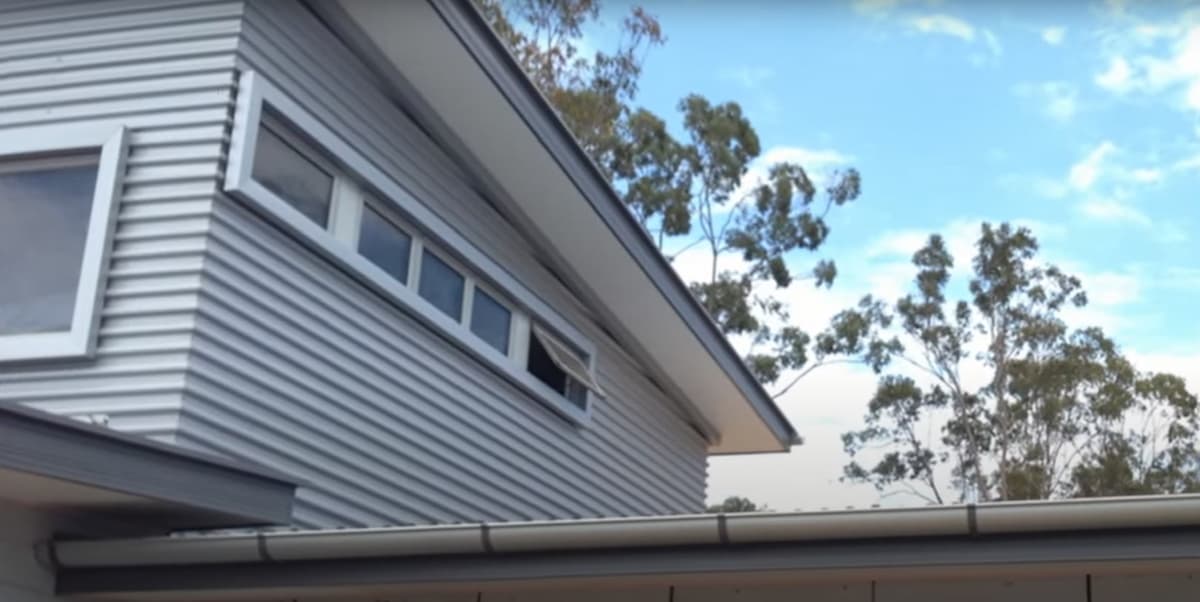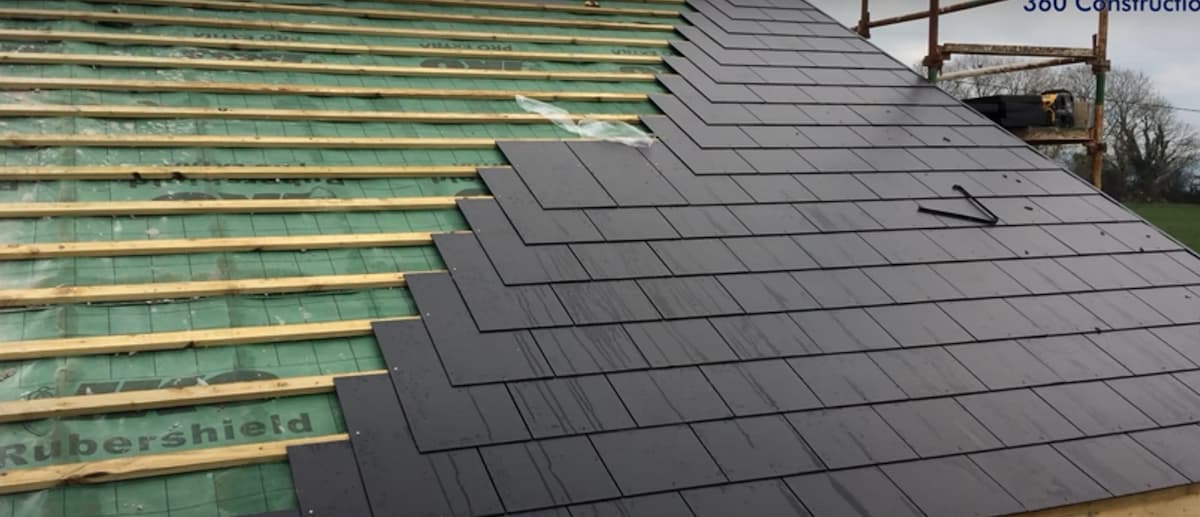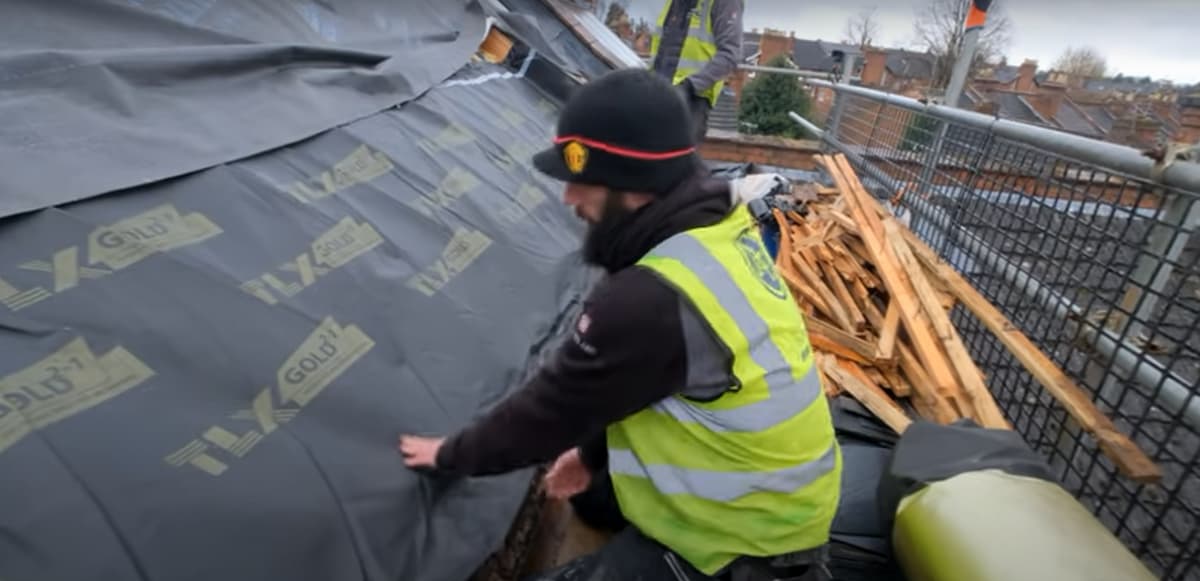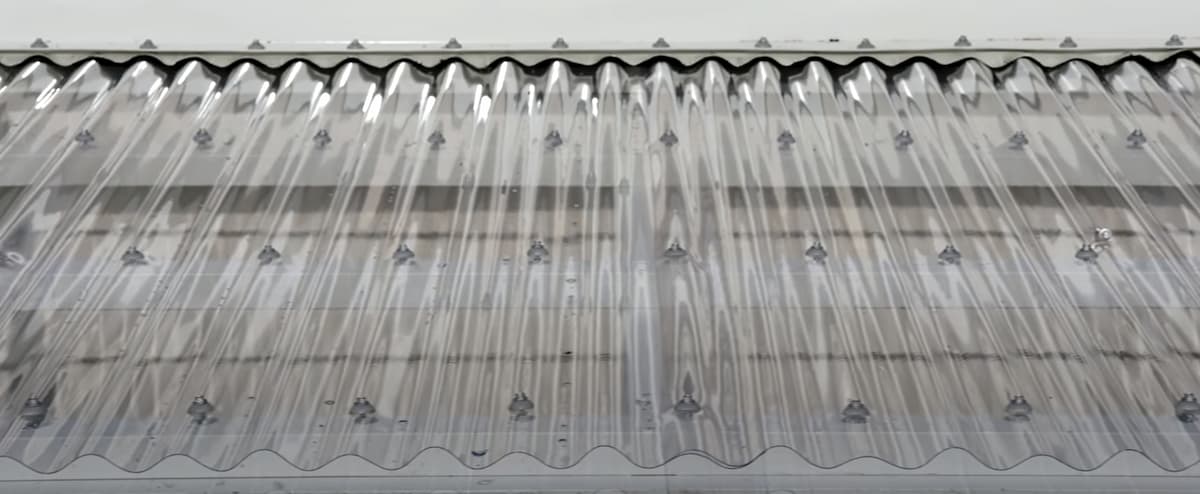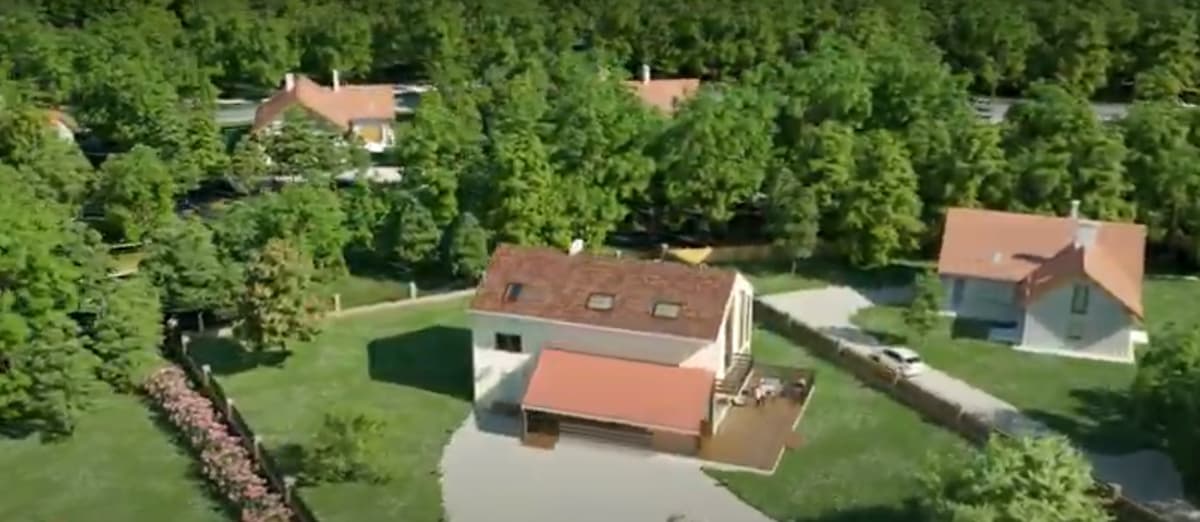
First Things First, What is Roof Sarking?
Sarking is a membrane that is fitted during tile or metal tile roof construction. It provides an air barrier as well as adding insulation to the underside of the metal lath to improve thermal performance. The membranes are usually made from heavy-duty plastics such as PVC, Hypalon or TPO (thermoplastic polyolefin), but can be made from other materials too.
Why do I Need Roof Sarking on Metal Roofs?
In simple terms, if you have cold/wet/windy conditions outside then a lack of roof sarking could mean warm damp air getting into your loft space increases the risk of condensation and decay in the roof building structure.
Another reason you need roof sarking is that it prevents air leakage through your metal roof which becomes noticeable as draughts around the windows, doors and cracks between internal wall surfaces.
Condensation can lead to mould which can be harmful to your health especially if you have asthma or allergies to certain spores.
What is Roof Sarking?
The answer to the question of what is roof sarking lies here – is a rolled material that forms an airtight vapour barrier underneath roof tiles that will also provide insulation for your loft space. It’s mainly used by builders during new builds to prevent any issues with dampness after construction has finished though some retrofit applications are available.
Is Roof Sarking Necessary?
No. Roof sarking should only be used if you are in a wetter, windier, colder location where improving thermal performance is necessary. If you’re not in one of these areas then roof sarking is unnecessary and may not seal everything properly.
It’s also important to be aware that many homes have tar paper that provides necessary insulation for the home without having to have roof sarking which can help save on costs.
How Much does Roof Sarking Cost?
Because of its widespread use during new build construction projects, it’s often not cost-effective for a homeowner to have roof sarking fitted after the work has been completed. Costs typically range from $2 to $3 per square metre (p/m2). A 60 x 1.35-metre roll will typically cost between $180 to $300.
At first glance, this seems like sensible advice as it costs money and you need a builder’s licence but actually, roof sarking is not difficult to fit yourself so there’s no reason why you can’t do it yourself or at least get help from someone who knows what they’re doing.
Insurance companies also provide value-added services such as organising the building code of Australia warranties and providing a list of reputable builders who have been checked out thoroughly so choose an insurer that can help with finding a suitable installer at not too high a cost.
Can I Install Roof Sarking on an Existing Roof Space?
If you decide to carry out this job yourself, please ensure that you wear proper PPE (Personal Protective Equipment) when handling heavy materials eg rubber gloves plus goggles.
Any roof sarking should be installed in accordance with BS 5250 by qualified personnel.
It’s important to remember that any building frameworks carried out without the relevant permissions could invalidate your insurance.

How to Repair Roof Sarking or Install and Fill in the Roof Cavity Yourself?
Make sure you read and follow the instructions on the sarking before installing it.
- If possible, when buying sarking check what preparation is required so that when you get started, there’s no delay in getting on with the job.
- Before installing sarking it’s important to ensure that the roof cavity is clean and completely dry before you start work.
- The first strip should run along the eaves at the bottom of the roof space, overlapping successive sheets by about 150mm (6″).
- Make sure all cuts are smooth and square with no burrs and if using metal edges cut the sarking at a 45-degree angle to ensure a good seal.
- Any repairs should be done before you install sarking as they will need to be done from below, which is difficult once the sheets are fitted and overlapping each other.
- In windy areas or where there’s a risk of high winds, it’s important to make sure that the sarking is tacked down securely to the roof sheet.
- Use galvanised nails or screws with no sharp edges or protruding points, which could damage the sarking and make it less effective.
- Make sure you overlap each course by about 150mm (6″).
- Check for any loose sarking roof and re-secure it if necessary and also check around the edge of the roof space to ensure that there are no signs of sarking lifting or coming away from the roof sheet.
- Remember to take the wear and tear into account when deciding on which materials you want to use for sarking.
Is Sarking the Same as Roof Insulation?
Different types of insulation will provide relief from radiant heat in the summer and cold in the winter with thermal performance. Roof sarking, on the other hand, is an essential part of a metal roof that effectively protects underlying materials (such as roof tiles) from damage during storms or heavy winds.
Insulation is material that reduces the potential for the flow of radiant heat by providing thermal resistance against outside temperatures so you’ll be better protected against weather changes.
Insulation can come in various forms insulating blankets which are fitted to the exterior walls, inside your home’s cavity walls or cavity ceilings where it helps reduce noise levels, blocks drafts and makes homes much more energy efficient. As it provides protection against outside weather conditions whilst also preventing soundwaves from entering your home insulation can help improve both comfort and health.
So while insulation is an essential part of your home, roof sarking is a membrane installed during tile or metal roofs construction to protect against weather damage. It’s placed above the existing roof sheet, usually over battens attached to the rafters which give it extra strength.
Roof sarking can also be used under tiles or slates to hold them in place and provide protection against the elements.
How Should Sarking Be Installed and Fitted Underneath Roof Tiling?
Making sure the roof sarking is fitted properly will ensure that the underlying materials are protected against damage. Roof sarking can be fitted underneath your existing tiling or slates to protect them from damage during storms or high winds by following these instructions:
- Make sure that the roof cavity is clean and dry
- Start at the eave of the roof near to where it joins with the main wall or fence, overlapping successive sheets by about 150mm (6″)
- Fix the tiling or slates onto the roof sheeting
- Fit metal edges for a good seal
- Repair any holes before installing
- Fit galvanised nails or screws
- Overlap each course, allowing for wear and tear.
Does Sarking Go Over or Under Roof Battens?
Sarking goes over the battens, and in some cases is nailed directly onto them.
The battens will be fixed to the rafters and also help strengthen the sarking against wind damage.
Sarking can be used under roof tiles or slates to hold them in place and provide protection against the elements if left exposed during installation. However, it’s usually installed over battens for extra strength.
There are many different types of insulation that can be used for sarking depending on your individual requirements.
For example, synthetic roof sarking is typically made from bitumen-based material which gives it added strength and durability. This type of roof sarking is 100% waterproof, windproof and radiant heat resistant, making it the perfect product to complete your roof system refurbishment.
Synthetic sarking is lightweight, easy to cut and install allowing for quick installation on any tiled or metal roofs without causing much inconvenience to your household. It’s also available in various thicknesses meaning you can select the ideal size based on your roof thickness. It’s supplied as rolls of sarking (typically 1.2m (4′) wide) and is simply rolled out by the installer.
As mentioned earlier, insulation always comes in different forms such as thermal insulation blankets which are fitted to the exterior walls of your home or cavity walls and ceilings where it helps reduce noise levels, blocks drafts and makes homes much more energy efficient.
It provides protection against outside weather conditions while also preventing soundwaves from entering your home insulation can help improve both comfort and health.


